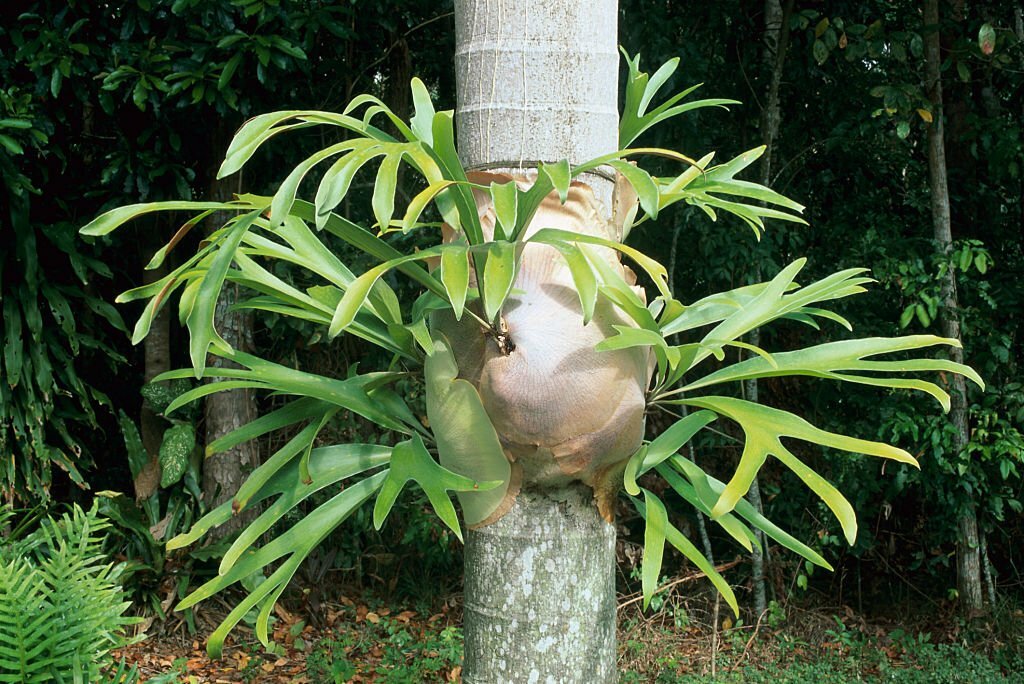Table of Contents
Delve into the Exquisite World of Staghorn Ferns: Discover Why are Staghorn Ferns So Expensive and Rare! Unearth the Green Luxury.
Staghorn ferns, those remarkable additions to your indoor or outdoor garden, are not your everyday greenery. They bear a striking resemblance to a rack of antlers adorning a hunter’s cabin, but what truly sets them apart is their hefty price tag. In this article, we delve into the ten compelling reasons that make these unique ferns a premium addition to your botanical collection. Discover the essence of why staghorn ferns are worth the investment.
1. Not Mass-Produced: The Rarity Factor
In the world of horticulture, mass production is a common practice for plants that are popular garden staples. Think of daisies, marigolds, and roses, which you can easily find in any local nursery. These mass-produced plants are readily available, and their affordability reflects the quantity-over-quality approach. In contrast, staghorn ferns are a rare find. They are not churned out in large quantities in factory-like greenhouses, making them exclusive and consequently more expensive. The rarity factor drives up the price, as they rely on individual sales for profit.
2. Few Growers: A Limited Market
The limited number of growers specializing in staghorn ferns is another contributing factor to their high cost. Many garden shops prefer to stock plants that sell quickly and reliably, and staghorn ferns, although unique in shape, do not fit the bill for most buyers. This limited demand results in fewer growers venturing into the staghorn fern market, further reducing the supply. As a consequence, consumers may need to travel long distances to find a seller, which, in turn, gives growers the leverage to charge premium prices due to limited availability.
Read also: Why You’re Craving Beans

3. Rare Worldwide: Geographic Constraints
Staghorn ferns are naturally found in only a handful of countries, including Africa, Australia, and Southeast Asia. Their specific environmental requirements, such as a hot, dense, and humid climate, limit their growth to select regions. This inherent rarity makes them expensive as they need to be cultivated in controlled environments or imported from their native habitats, incurring additional costs. Growers who sell staghorn fern seedlings or seeds in these regions can charge higher prices due to the exclusivity, which is passed on to the consumer.
4. Demanding Care: Maintenance Expenses
Staghorn ferns are not your typical low-maintenance houseplants. They require specific tools, plant nutrients, and careful attention. With horizontal growth patterns and a preference for hanging planters, they demand adequate space and regular care. These factors, combined with the current fertilizer shortage, can drive up the cost of caring for your staghorn fern. Many enthusiasts opt to hire professional landscapers or gardeners, adding to the expenses. The extensive care requirements contribute to their higher price tag.
5. Slow Growth Span: Patience Pays Off
Staghorn ferns have a notably slow growth span, meaning that growers cannot quickly replenish their stock or meet high demand. This extended growth period results in a scarcity of mature ferns, as many homeowners prefer larger, more established plants for immediate decoration. Growers invest time and resources without reaping the benefits until the fern reaches a sellable size. To cover their expenses, including maintenance and space, they must charge premium prices when selling these patiently cultivated specimens.

6. Popularity Factor: Demand Exceeds Supply
Despite the inherent challenges associated with staghorn ferns, their popularity remains high. The peculiar, antler-like shape of these ferns makes them an attractive addition to any indoor space. Their uniqueness becomes a focal point, and their demand often surpasses the available supply, particularly for mature specimens. This surging demand, coupled with their limited availability, leads to higher prices for these popular indoor plants.
7. Disease-Resistant: Quality Assurance
Staghorn ferns boast a remarkable resistance to common plant diseases, setting them apart from many other green companions. This resilience appeals to gardeners who want their plants to thrive without the risk of illness. Healthy staghorn ferns have a lower likelihood of affecting surrounding plants, ensuring the overall garden’s well-being. The assurance of disease resistance enhances their desirability and justifies their higher price.
8. Natural Air Purifiers: Health Benefits
Staghorn ferns contribute to a cleaner, healthier living environment by serving as natural air purifiers. Their wide leaves capture harmful volatile organic compounds from the air and channel them into the soil, where beneficial microbes neutralize them. With air pollution concerns on the rise, many homeowners invest in staghorn ferns to create safer, cleaner indoor spaces. The potential health benefits elevate their demand, further driving up the price.
9. Drought-Resistant: Adapting to Harsh Climates
The staghorn fern’s relatively high tolerance for drought sets it apart from other fern species. Its ability to withstand periods of low moisture makes it an attractive choice for regions with hot climates and limited rainfall. The fern’s adaptability to water-scarce environments elevates its demand, and its limited supply results in higher pricing.
10. Medicinal Properties: Expanding Markets
Although not yet scientifically proven, staghorn ferns are occasionally used for their potential medicinal properties. Some cultures believe in their efficacy for various health purposes, such as ulcer prevention and supporting pregnancy. This burgeoning market for medicinal applications increases demand for staghorn ferns, yet their supply remains relatively constant. The intersection of traditional beliefs and modern medicine leads to higher prices for these versatile plants.

In Final Thought:
Staghorn ferns, with their striking appearance and unique characteristics, are coveted additions to any garden or home. Their rarity, limited availability, and a host of appealing qualities contribute to their higher price point. Understanding the reasons behind the premium cost allows us to appreciate the value that these distinctive ferns bring to our botanical collections.
People also ask
What is a staghorn fern?
A staghorn fern (Platycerium) is a unique type of fern known for its distinctive, antler-like fronds. These ferns are popular in horticulture for their striking appearance and can be grown indoors or outdoors.
Why are staghorn ferns so expensive?
Staghorn ferns are relatively expensive due to their rarity, limited supply, demanding care requirements, slow growth, and high demand among gardening enthusiasts. Their unique characteristics contribute to their premium pricing.
Where do staghorn ferns grow naturally?
Staghorn ferns are naturally found in select regions, including Africa, Australia, and Southeast Asia. They require a specific hot, dense, and humid environment to thrive.
Can I grow a staghorn fern indoors?
Yes, you can grow staghorn ferns indoors. They adapt well to indoor conditions, making them a popular choice for home and office decor.
Do staghorn ferns require a lot of care?
Yes, staghorn ferns require specific care, including regular watering, proper light conditions, and maintenance. Their unique growth patterns and nutrient requirements can make them more challenging to care for compared to other plants.




